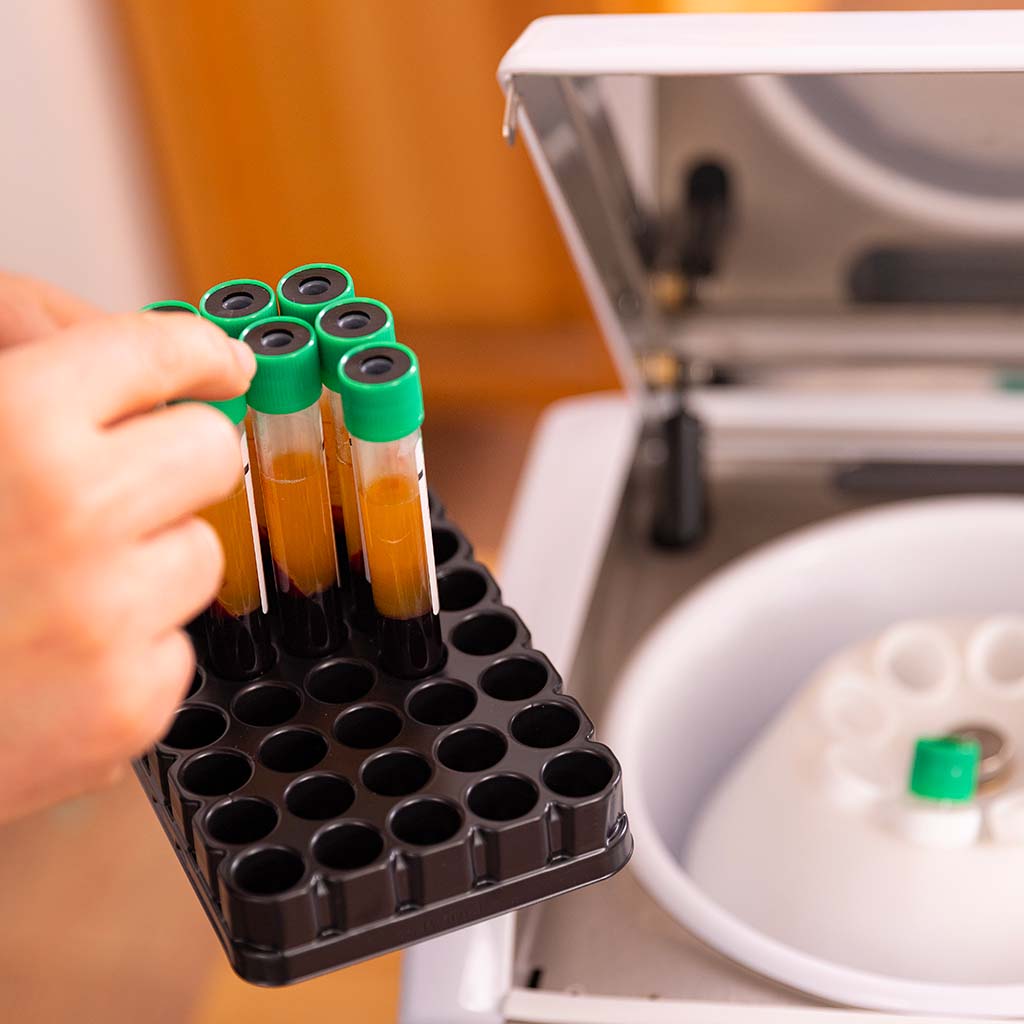Stem cells infiltrations to treat osteoarthritis

Data publicării: 19-05-2023
Actualizare la: 19-05-2023
Subiect: Ortopedie
Durată de citire estimată: 1 min.
Stem cell infiltrations allow regeneration of cartilage tissue, repairing it from the damage of osteoarthritis (degenerative joint disease) in the early or intermediate stages, when other therapies have had no effect and prosthesis implantation is not yet indicated. It is a small surgical procedure, under deep sedation and of short duration, possibly repeatable at least 1 year later, that aims to reduce pain and restore limb mobility.
We discuss this with Dr. Marco Ometti, orthopedist at the Orthopedics and Traumatology Department at Ospedale San Raffaele in Milan, directed by Professor Vincenzo Salini.
What stem cells are?
Stem cells are yet undifferentiated primitive cells that, to simplify, start acting once they receive stimuli from outside. In this sense, when we infiltrate a stem cell into a joint, it becomes a cartilage cell, called a chondrocyte.
If we imagine the joint as a carpet with holes to be closed with some patches, it is precisely the stem cells that, once injected, without the need to replace the entire cartilage surface, intervene to regenerate the tissue by distributing themselves over the damaged area to repair it.
For what pathology they are used?
The procedure is used in cases where the patient has early or intermediate level osteoarthritis. To understand whether this option is appropriate for one's health condition, an orthopedic examination and consequently an X-ray should be performed to study the degree of wear and tear on the joint structures. In fact, the surgery is not indicated for conditions of excessive joint wear.
How the infiltration procedure takes place?
To begin with, stem cell harvesting is required, which is performed in an inpatient setting with deep sedation, lasting about 20 minutes.
From the patient, who is deeply sedated in the operating room, a quantity of bone marrow or adipose tissue is taken from the iliac crest or periumbilical panniculus adiposus, which is then centrifuged with special machines so as to separate its components. Once the concentrate is obtained, it is infiltrated with a syringe inside the joint.
The choice of cell harvesting area depends on the age of the patient: usually the iliac crest area is chosen for younger patients, while the periumbilical area for patients over 55-60 years old. After surgery, the patient is taken back to the room and is able to walk independently.
What are the benefits for the patient?
The first benefit that the patient experiences once the infiltration is performed is to no longer feel pain, and then to see the function of the affected limb restored.
Compared with hyaluronic acid, which function is to lubricate the joint and facilitate tissue gliding, stem cell therapy is a regenerative therapy, which aims to fill in damage to the joint, regenerating it.
How long the effect of stem cell therapy lasts
Duration of the effect of this therapy is at least 1 year, with monthly checkups to check the status of the disease. Often a single infiltration with stem cells is sufficient if they have completely regenerated the tissue into which they were infiltrated.
Contraindications to treatment
In cases where the joint is completely damaged and the arthrosis is severe, stem cell therapy is not sufficient and prosthesis is often necessary.
Patients who have had neoplasms, leukemias, and lymphomas also cannot access the treatment, since the procedure can accelerate the reproduction of cancer cells.
